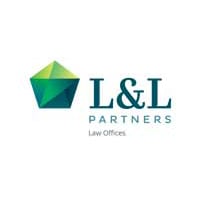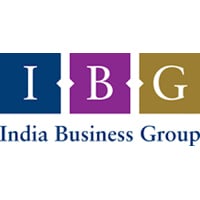
| IndiaRF








IndiaRF
IndiaRF is an investment manager that looks to invest in distressed assets. IndiaRF is a joint venture between Bain Capital Credit and Piramal Enterprises Limited. The distressed assets opportunity in India is over $250bn. The legal and compliance team is structured to play a leading role across the entire breadth of IndiaRF’s business. This includes shareholder and investor relations, fund raising, investments, asset management and general decision making. The team consists of two key senior professionals: Mrinal Chandran, general counsel and Anand Kashikar, head – compliance and regulatory. As part of the leadership team at IndiaRF, Chandran has a key role to play in all aspects of IndiaRF’s business. Chandran’s role includes deal structuring, deal analysis, execution, participating in investment committee decision making, asset management and exits. In addition, Chandran is also involved in investor relations and fund raising, internal policy making and implementation, acting as a liaison with regulators and government authorities in connection with legislation and policy making. Chandran also leads the management of the inter se relationship between the two joint venture partners at IndiaRF. In addition to the above, Chandran has oversight over the regulatory and compliance function. Kashikar is responsible for IndiaRF’s regulatory and compliance function across all geographies. This includes ensuring compliance for multiple fund entities in IndiaRF. He is point of contact at IndiaRF for all issues concerning corporate governance in relation to the joint venture as well as in connection with IndiaRF’s portfolio companies. He plays a lead role in interacting with regulatory authorities from time to time. Kashikar is also actively involved in fund raising, execution of deals and supporting post investment asset management. He works closely with portfolio companies in the development and implementation of their policies and in compliance programmes. Kashikar also supports the investor relations and fund raising functions.
IndiaRF has invested over $300m in deals in the last year. This includes deals in the metals, pharmaceuticals and the chemicals sectors. India RF’s investments include investing in primary debt, primary equity, convertible instruments. purchase of shares and purchase of non-performing loans. IndiaRF’s team works closely with external advisors: legal, tax, accounting, consulting and technical, to understand the underlying investment opportunity. As IndiaRF’s invests in distressed assets, each deal is bespoke and involves recapitalising businesses, satisfying existing claims or restructuring them, purchasing assets in a bankruptcy process or pursuant to an auction. It involves multiple work streams including devising an optimal structure that captures the entire risk-return spectrum, addresses investment risk issues such as tax structuring and addressing downside scenarios.
The distressed assets market has seen a slew of regulatory changes that make India a global hotspot for this investment strategy. The Government of India has introduced the Bankruptcy Code, 2016 that contemplates a speedy and efficient resolution to bankruptcies. A host of incidental changes have been made to the Companies Act, the Takeover Code, foreign exchange regulation and other securities regulations. The Reserve Bank of India has also set out a framework for lenders to recognise, restructure and sell stressed loans. As a nascent framework that is heavily reliant on legal input and structuring for making investments, the new bankruptcy framework poses many interesting challenges. Our team is at the forefront of much of the innovation and early structuring of investments into distressed assets. The absence of precedent means that decisions taken in relation to investments needs deep analysis and layered thinking. Further, inter-linkages between various provisions of the Bankruptcy Code and other laws makes for interesting situations.
The team continues to lead fundraising initiatives which are multi-geography exercises and involve putting together investing vehicles and structures. Apart from this the team is focussed on the many opportunities that the distressed market presents. IndiaRF can participate in all parts of the capital structure of a business: debt, equity or mezzanine capital. Additionally, IndiaRF can also buy non-performing loans. Our focus will be to invest the capital we have raised in distressed deals. As our business increases and we invest in complicated deals, we are also looking to build strong external teams that will partner with IndiaRF’s business. The team will drive the conceptualisation and execution of all parts of our business. Given the nature of our business, the team will be at the frontlines of these endeavours and work closely with other parts of the IndiaRF business.
As a business that is growing rapidly, IndiaRF looks to use technology for better and more efficient outcomes. We view our business as a knowledge business i.e. our “heavy machinery” is information or knowledge which we seek to harness in a way that improves our business. Multiple initiatives at IndiaRF that are under continual implementation will allow us to access information more quickly, share it internally across different parts of our business, to analyse the relevance and impact and to take better decisions.
IndiaRF has a strong culture of collaboration. The primary reason is our flat structure which allows for people across the organisation to work together. Our organisation structure facilitates a healthy exchange of ideas, transparency and mutual trust. Cross pollination of ideas and a multi-disciplinary approach also makes IndiaRF personnel adept and familiar with various aspects of IndiaRF’s business. We also encourage an informal work culture. We organise regular team meetings and share all the developments at the firm with the team. This ensures that everyone feels part of the team and is aware and able to contribute to the work that is going on at the firm. As part of the senior leadership of the firm, we are committed to ensuring that the atmosphere at IndiaRF is healthy and conducive for work.